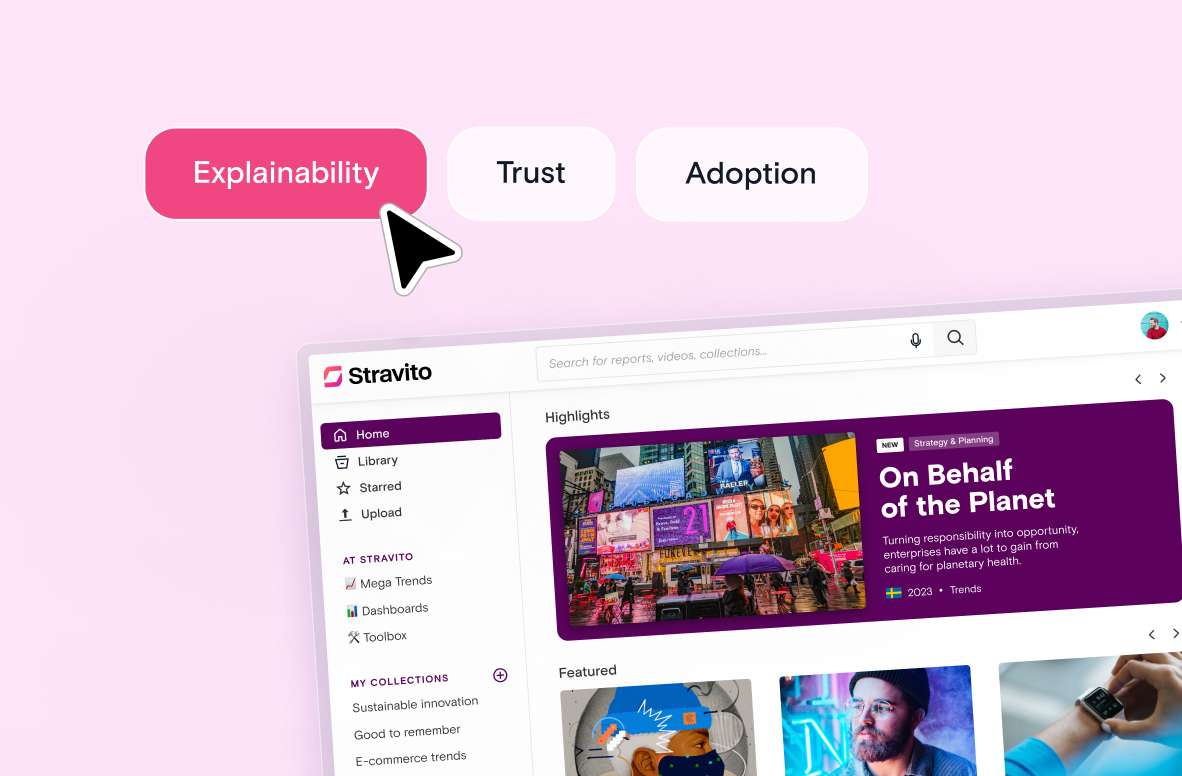Think about the energy of a live newsroom. Editors racing to hit deadlines, journalists updating stories in real-time, and designers adjusting page layouts on the fly.
Along with the urgency comes passion, cohesion, and commitment. Everyone understands the brief: to shape a story that’s relevant, accurate, and lands at the perfect moment.
Now, imagine your insights team functioning the same way. Collaborative, fast-moving, and focused on relevance.
When insights teams adopt a newsroom mindset, the way research is viewed and approached changes. Insights aren’t left in long-lost folders or slide decks that are viewed just once. Instead, they spark action and attention, just like an eye-catching newspaper article does.
Looking to bring that same impact and energy to your research team? These five habits will help you get there.
1. Work fast, but not sloppy
Journalists don’t wait until a story is perfect to publish it. They build the story piece by piece, starting with the facts they have and fine-tuning it as more come in. This applies to insights, too.
Many of us are perfectionists when it comes to sharing our research, but too often, teams hold back. They wait for complete data sets, deeper analysis, and additional validation. But sometimes, by the time “perfection” arrives, the best moment to influence the decision has passed.
A more iterative approach to sharing insights can help break that cycle. Rather than refining an 80-slide report, high-performing research teams make edits based on feedback and adjust in real time.
Start small by trying to adjust your mindset and normalize iteration as you go, even if you’ve already delivered your insights. Because insights that evolve matter more than insights that arrive too late.
In fact, McKinsey & Company found that organizations following agile practices achieved up to 30% efficiency gains and helped the company run five to ten times faster.
2. Build the story with your team
Newsrooms aren’t run solely by reporters. Editors, photojournalists, designers, producers, and plenty of other roles all bring their unique perspectives. Stories come alive through collaboration and dialogue.
Insights teams thrive under the same principle. The right voices involved early on in the research process — like product, marketing, or sales — the stronger, more well-rounded, and more valuable the final results.
Strong collaboration is a proven driver of performance. Approximately 73% of employees who collaborate within their work report improved performance, while 60% say it sparks their innovation. This shows that teamwork and collaboration directly contribute to both individual and team success.
Meanwhile, 64% of employees report losing three or more hours a week due to poor collaboration. For example, time spent waiting for information or redoing other people’s work.
Some good collaboration habits could include morning standups or “editorial” planning sessions. Even spending 10 to 15 minutes each morning with the team to align on updates and flag any roadblocks can make a huge difference.
These checkpoints are opportunities to challenge assumptions, reframe research questions, or identify patterns.
|
🎙️ Want to hear how real insight leaders bring this newsroom mindset to life? Listen to our podcast episode “The Newsroom Mindset with Grant Feller, Founder at EveryRung” for expert knowledge and advice. |
3. Chase relevance
Good journalism is grounded in context. For insights to really resonate, they should respond to current news, trends, or topics. Because insights that align with real-time narratives are more interesting, sharper, and compelling.
Here’s a great example: Aston Martin Aramco Racing recently tapped into consumer insights showing that its female fan base had grown from around 32% in 2017 to 41% in 2025. More specifically, currently, the brand’s fastest-growing fan base is women aged 16 to 24.
In response to this, Aston Martin partnered with lifestyle and beauty brands at race-day events. For example, Elemis offered spa experiences and skincare kits, and Glaize provided green nail wraps with matching racing colors.
Aston Martin used its audience research to explore a new cultural territory, blurring motorsports with beauty and wellness. Their insights into who their fans are and what experiences resonate with them helped them plan campaigns that feel timely, inclusive, and deeply relevant to their interests.
Staying up-to-date on recent news about your audience and in your industry is key here. A good idea is to subscribe to news alerts in your field to stay ahead of trends.
Timing, in this case, isn’t just about delivery; it’s about relevance. The closer your insights align with current trends and topics, the greater their influence on strategic conversations.
4. Edit with intent
In the newsroom, editors trim the fat and fluff. Because stories have to grab attention fast and get to the point.
But insight teams often fall into the trap of over-delivering information, often to prove the hard work they’ve done. One deck turns into five, and a single key finding gets buried within dozens of fancy slides.
However, information overload often leads to inaction. Only 45% of business data is used in decision-making, while 34% of leaders report that they simply don’t have enough time to analyze the data they receive effectively.
Likewise, 50% of leaders say they feel overwhelmed by the data and dashboards they encounter daily, while most only monitor an average of five metrics to measure their department’s success. So, if you want your insights to stand out to stakeholders, simplicity is essential.
The solution is prioritizing clarity. It’s creating a headline that sticks and focusing on the most surprising or actionable findings.
Think of your final delivery as like an article. Lead with the main headline and story, followed by clear evidence. Trim the rest.
And if you can’t explain an insight in a single, eye-catching sentence, it isn’t ready yet. Remember, you can still share the complete insight deck with the relevant people and upload it to your research repository so the entire org has easy access to it.
5. Nail the timing
You can have the perfect insight, beautifully packaged and ready to go, but if you miss the right window to share it, it won’t stick. Journalists know this instinctively.
Because a scoop can mean nothing if it lands after the competition has gotten there first or when the audience has moved on.
Insight teams must think the same way. Approximately 87% of top-performing digital organizations prioritize agile, rapid decision-making. Acting quickly, adapting to market shifts, and meeting customer needs in real time are essential.
Consider mapping out “insight moments” across the year. For example, known planning cycles, major campaign launches, and key stakeholder meetings. Or, use editorial calendars or sprint cycles to determine delivery.
Adopt habits that make insights stick
Following habits from the newsroom can completely elevate the role of insights in your organization. With practice, teams become more agile, visible, and involved in strategic stakeholder decisions. They stop simply reacting to briefs and start shaping real business questions.
With a newsroom mindset, your team can learn to spot patterns early and craft engaging stories that resonate. And it can start small, perhaps with a morning standup routine, a reframed report, or a shift in tone from neutral observer to curious storyteller. Over time, these habits build into a new insight-led culture.
Ready to think and work like a newsroom? Stravito makes it easy to surface relevant insights, collaborate across teams, and easily deliver research when it matters the most. Request a demo today.




